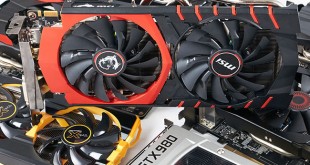
This week Nvidia launch their new GTX970 and GTX980 GPU's – based on the exceptionally efficient Maxwell architecture. In this review we look at a modified, overclocked solution from partner MSI – the GTX970 Gaming 4G. Not only does this card ship with a tasty overclock, but it is one of the prettiest graphics cards we have ever seen.
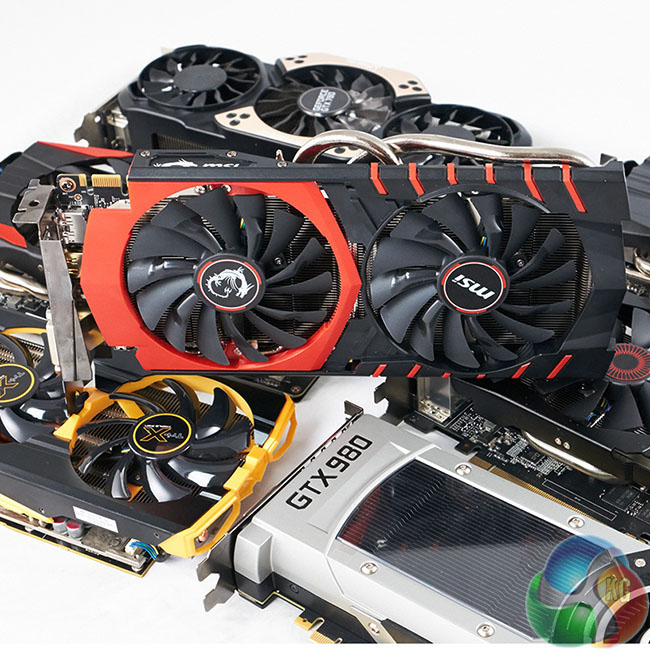
The MSI GTX 970 Gaming 4G is undoubtedly a looker. The two tone red and black colour scheme looks fantastic and we love the red vertical ‘flashes' over the black section of the cooler.
Even though we have a handful of reviews ready for the launch today, Nvidia's Maxwell architecture deserves a little discussion before we get into testing the MSI GTX970. If you are a regular reader of KitGuru then you will already have studied our multiple analysis of the lower level GTX750Ti solution throughout the year.
The GTX750ti has been one of the most exciting cards that Nvidia have released in recent years – performance is close to the HD7850 while consuming half the power at the socket – and all without the need for a PCIe power cable. It produces such a modest heat emission that the Asus GTX750Ti Strix OC we reviewed recently didn't need to spin the fans most of the time, even when gaming.
AMD really are so far behind now when it comes to power consumption that they will need to release a new architecture to compete. Not an easy thing to do overnight, but we hope they can become competitive again in the coming months. Competition is good for us, the consumer.
The Maxwell architecture has been designed to deliver twice the performance per watt of previous generation Geforce hardware. It sounds easy enough on paper to achieve, but the real world challenges for Nvidia have been complex.
| GPU | GeForce GTX 680 (Kepler) | GeForce GTX 980 (Maxwell) | Geforce GTX 970 (Maxwell) |
| Streaming Multiprocessors | 8 | 16 | 13 |
| CUDA Cores | 1536 | 2048 | 1664 |
| Base Clock | 1006 mhz | 1126 mhz | 1050 mhz |
| GPU Boost Clock | 1058 mhz | 1216 mhz | 1178 mhz |
| Total Video memory | 2GB | 4GB | 4GB |
| Texel fill-rate | 129 Gigatexels/Sec | 144.1 Gigatexels/Sec | 109.2 Gigatexels/Sec |
| Memory Clock | 6000 mhz | 7000 mhz | 7000 mhz |
| Memory Bandwidth | 192 GB/sec | 224 GB/sec | 224 GB/s |
| ROPs | 32 | 64 | 64 |
| Manufacturing Process | 28nm | 28nm | 28nm |
| TDP | 195 watts | 165 watts | 145 watts |
The new GM204 GPU is very efficient. The Maxwell SM has been rebalanced so that the CUDA cores are fully utilised more often. Doing so saves power and enhances overall performance. The L2 cache size in the GM204 is 2MB, or four times larger than the GK104. The addition of extra cache means that fewer requests to the GPU memory are needed – again reducing power consumption and pushing more performance.
The Geforce GTX 970 is equipped with 7Gbps memory. Those of you with higher resolution monitors, or running in a multi screen configuration will also be pleased to hear that there is 4GB of GDDR5 memory on the card, not 3GB – this memory will push 224 GB/s sec. Nvidia have added a new compression engine to reduce the demand on DRAM bandwidth.
The MSI GTX970 Gaming 4G has received a core clock enhancement to 1,140mhz, from 1,050mhz on the reference design. The GDDR5 memory remains untouched, as we would expect – its certainly not going to be a bottleneck.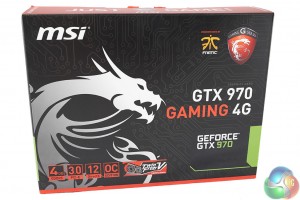
MSI box artwork is immediately distinguishable – their Dragon logo takes pride of place across the front of the box. MSI list some technical information along the bottom of the MSI GTX 970 Gaming 4G box.
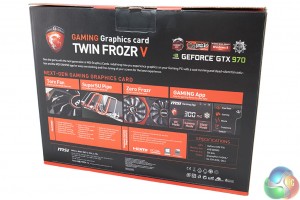
MSI highlight their cooling system on the back of the box, including information on the Torx Fan and SuperSU Pipes built into the heatsink.
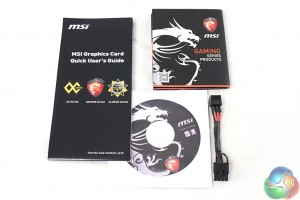
The bundle includes a power converter, literature on the product, and a software disc.
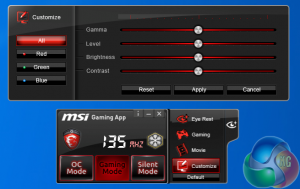
MSI also include a ‘Gaming App' on this disc which may prove useful for some people. I have to admit after playing with it for a few minutes I de-installed it completely. The only MSI software I like to run is MSI Afterburner (more on this later in the review).

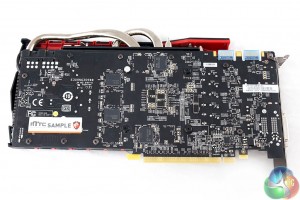
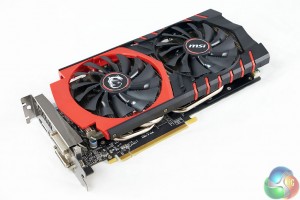
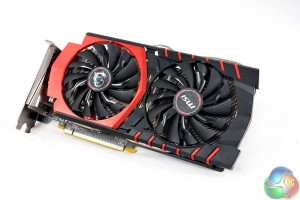
This is the Cameron Diaz of graphics cards. Slim, beautiful and very sexy. It is built around a black PCB, which earns it bonus points (We don't like the nasty dark brown PCB's). Power is delivered via a 6-phase +2 configuration.
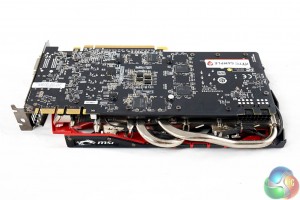
We can see the overhanging cooling heatpipes from the rear.
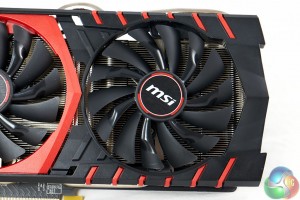
MSI are using 10cm ‘Torx' fans. The company have finally replaced their fans – and they are reportedly producing 19% ‘better' airflow than the fans used on the Twin Frozr 4 cooler.
MSI have also implemented a similar feature seen on their high end Lightning models – the fans are controlled independently by IC's on the PCB and GPU. MSI claim the independent GPU and PWM cooling reduces noise by up to 1.9dBa.
MSI point out that the new cooler is a ‘Hybrid' design and that they came up with this before ASUS did on their StriX Edition cards – which we really rate highly. They claim if the card is running below 50c then the fans will not spin at all, eliminating noise.
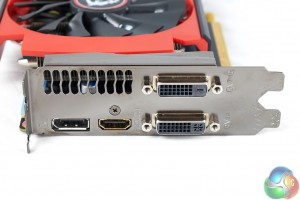
The MSI GTX970 Gaming 4G has two DVI connectors on the back (DVI-D and DVI-I), and a full sized HDMI 2.0 and DisplayPort. This HDMI port will handle 4K resolutions at up to 60hz.
The new Twin Frozr 5 heatsink is a little thinner than previous Twin Frozr designs, meaning its a little thinner than 2 full slots. This will help when running multiple cards in SLi configurations.
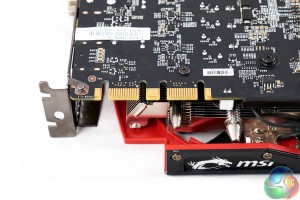
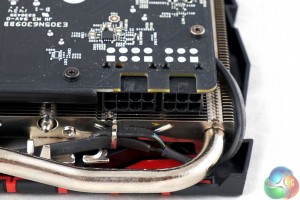
The card is SLi capable, and takes power from an eight pin and six pin power connector. The Asus GTX970 Strix OC that we also reviewed today only requires a single 8 Pin power connector. In our tests, both cards were perfectly stable in all situations and overclocked to similar levels.
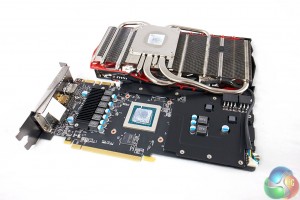
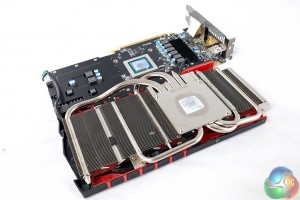
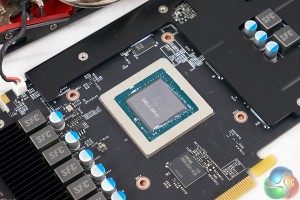
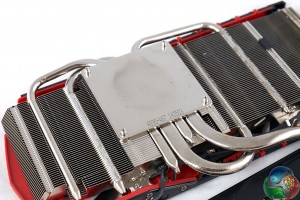
The new MSI cooling system looks formidable. There are four heatpipes in total. These are all running into various positions into aluminum fins on either side of the cooling base. High grade Samsung GDDR5 memory features on this card, cooled by a dedicated heatsink.
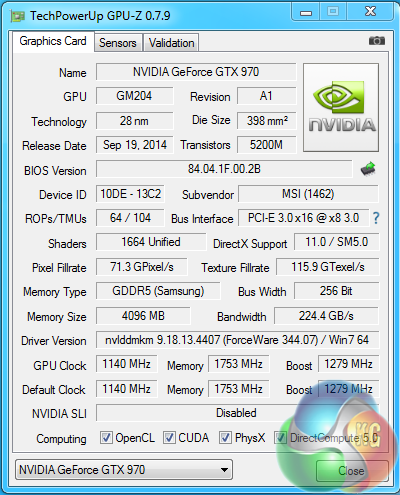
Special thanks to Mike over at Techpowerup for sending me over the latest beta version of GPUZ to fully support the Geforce GTX980. I felt like I was living in an episode of Back To The Future seeing a ‘release date’ of 19th September, when I started working on this review around the 13th.
The GM204 GPU is manufactured on the 28nm process. There are 64 ROPS, 104 Texture units and 1,664 CUDA Cores. The core speed is clocked at 1,140mhz with a turbo boost to 1,279mhz. The 4GB of GDDR5 memory is clocked at 1,753mhz (7Gbps effective).On this page we present some high resolution images of the product taken with a Fuji XT1 and a Sigma SD1 camera. These will take much longer to open due to the dimensions, especially on slower connections. If you use these pictures on another site or publication, please credit Kitguru.net as the owner/source.
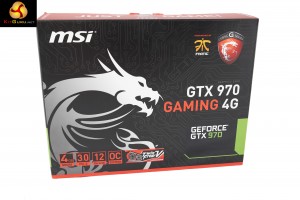
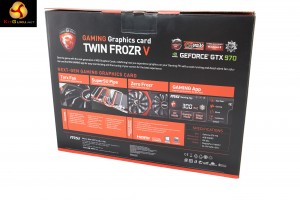
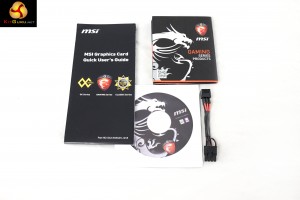
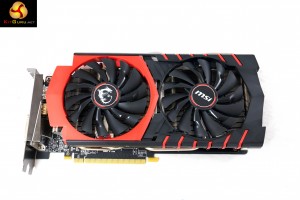
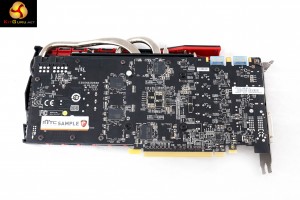
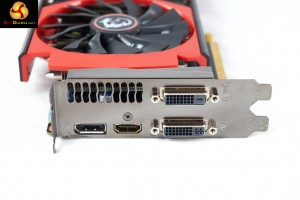
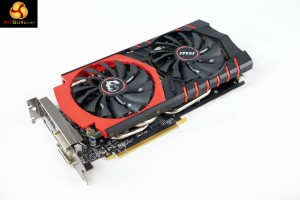
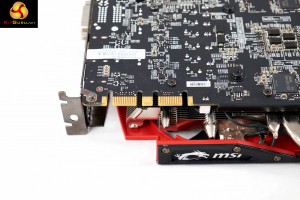
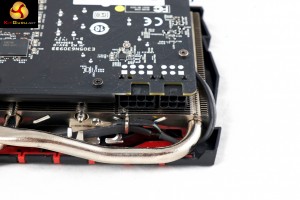
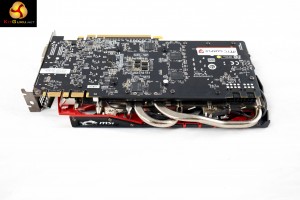
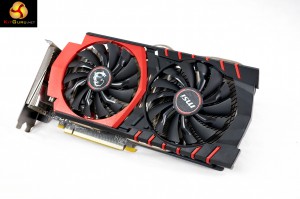
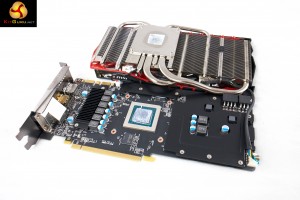
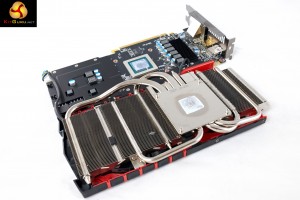
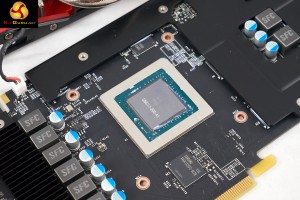
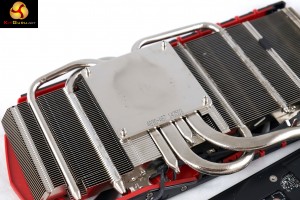
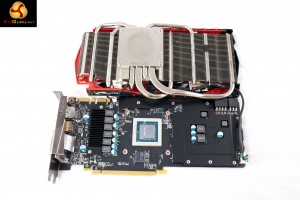
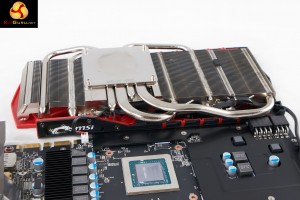
For the review today we are using the latest Nvidia Forceware 344.07 and AMD Catalyst 14.7 beta drivers. All of the AMD and Nvidia hardware in our reviews today used these drivers – tested this week before launch.
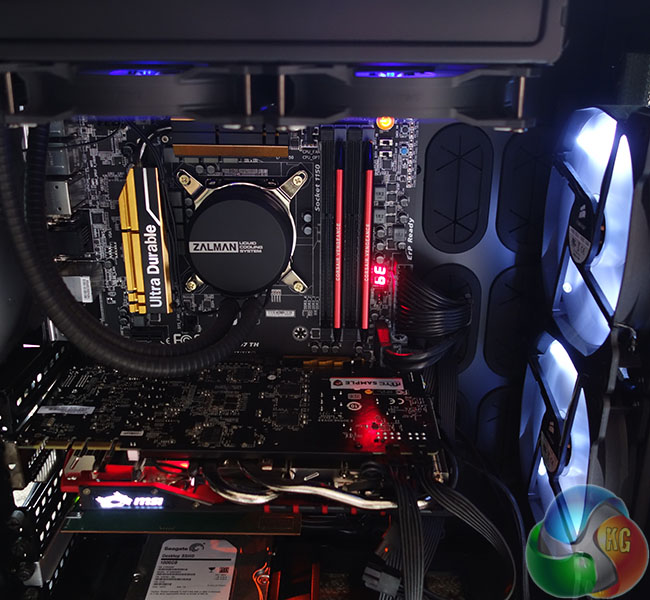
We are using one of our brand new test rigs supplied by DINOPC and built to our specifications. If you want to read more about this, or are interested in buying the same Kitguru Test Rig, check out our article with links on this page. We are using an Asus PB287Q 4k and Apple 30 inch Cinema HD monitor for this review today.
Comparison cards:
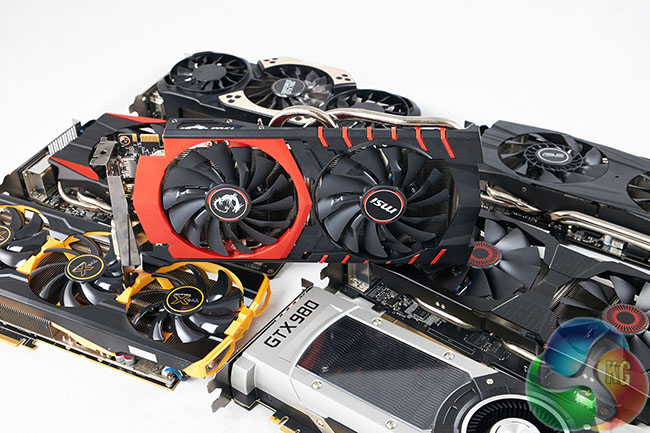
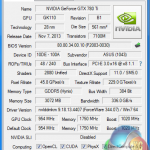
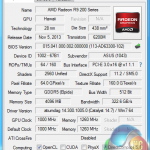
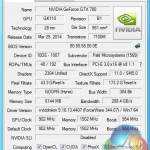
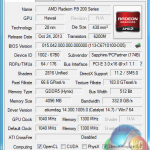
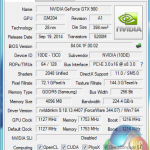
Asus GTX780 Ti Direct CU II OC (954mhz core / 1750 mhz memory)
Sapphire R9 290X Tri-X OC (1040 mhz core / 1300 mhz memory)
Nvidia GTX980 (1127 mhz core / 1753 mhz memory)
Palit GTX780 6GB (902 mhz core / 1502mhz memory)
Asus R9 290 Direct CU II OC (1000 mhz core / 1260 mhz memory)
Software:
Windows 7 Enterprise 64 bit
Unigine Heaven Benchmark
Unigine Valley Benchmark
3DMark Vantage
3DMark 11
3DMark
Fraps Professional
Steam Client
FurMark
Games:
Grid AutoSport
Tomb Raider
Metro Last Light Redux
Thief 2014
All the latest BIOS updates and drivers are used during testing. We perform generally under real world conditions, meaning KitGuru tests games across five closely matched runs and then average out the results to get an accurate median figure. If we use scripted benchmarks, they are mentioned on the relevant page.
Game descriptions edited with courtesy from Wikipedia.
Futuremark released 3DMark Vantage, on April 28, 2008. It is a benchmark based upon DirectX 10, and therefore will only run under Windows Vista (Service Pack 1 is stated as a requirement) and Windows 7. This is the first edition where the feature-restricted, free of charge version could not be used any number of times. 1280×1024 resolution was used with performance settings.
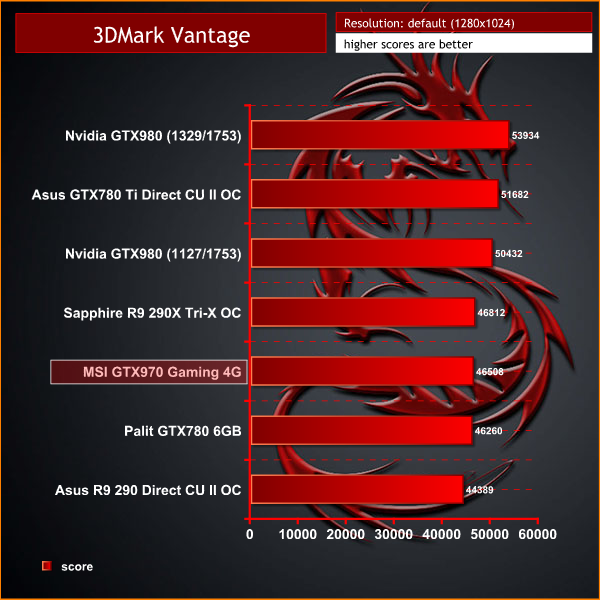
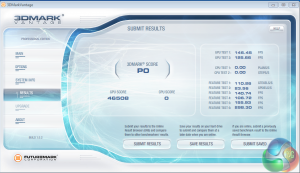
The MSI GTX970 Gaming 4G scores well in this older Direct X 10 benchmark, outperforming the Palit GTX780 6GB.
3DMark 11 is designed for testing DirectX 11 hardware running on Windows 7 and Windows Vista the benchmark includes six all new benchmark tests that make extensive use of all the new features in DirectX 11 including tessellation, compute shaders and multi-threading. After running the tests 3DMark gives your system a score with larger numbers indicating better performance. Trusted by gamers worldwide to give accurate and unbiased results, 3DMark 11 is the best way to test DirectX 11 under game-like loads.
If you want to learn more about this benchmark, or to buy it yourself, head over to this page.
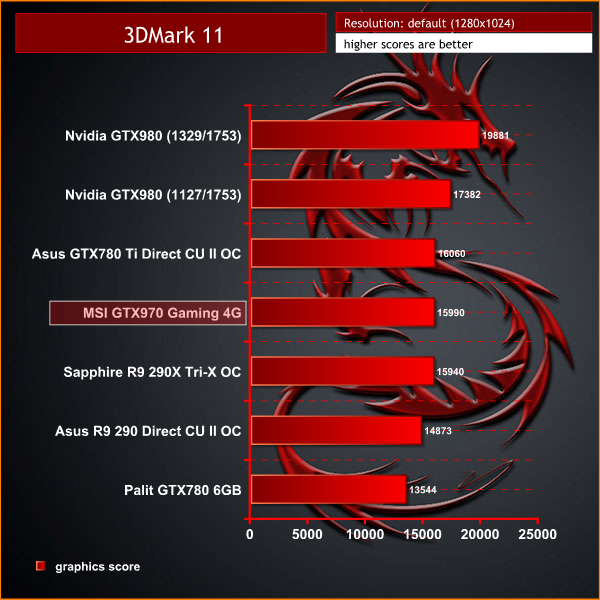
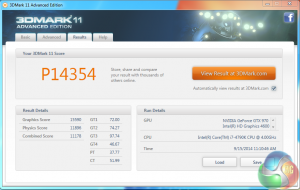
It is interesting to see that the MSI GTX970 Gaming 4G manages to slightly outscore the Sapphire R9 290X Tri-X OC graphics card.
3DMark is an essential tool used by millions of gamers, hundreds of hardware review sites and many of the world’s leading manufacturers to measure PC gaming performance.
Futuremark say “Use it to test your PC’s limits and measure the impact of overclocking and tweaking your system. Search our massive results database and see how your PC compares or just admire the graphics and wonder why all PC games don’t look this good.
To get more out of your PC, put 3DMark in your PC.”
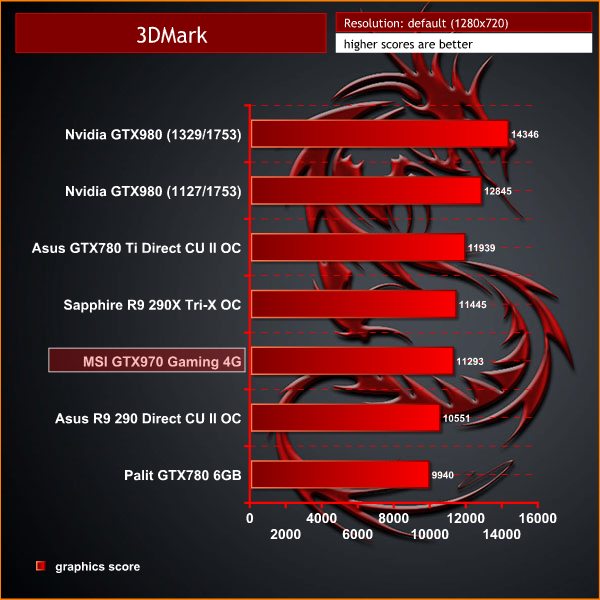
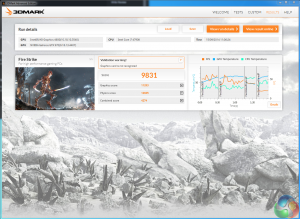
The MSI GTX970 Gaming 4G scores well, almost on an even footing with the more expensive Sapphire R9 290X Tri-X OC.
Unigine provides an interesting way to test hardware. It can be easily adapted to various projects due to its elaborated software design and flexible toolset.
A lot of their customers claim that they have never seen such extremely-effective code, which is so easy to understand.
Heaven Benchmark is a DirectX 11 GPU benchmark based on advanced Unigine engine from Unigine Corp. It reveals the enchanting magic of floating islands with a tiny village hidden in the cloudy skies. Interactive mode provides emerging experience of exploring the intricate world of steampunk.
Efficient and well-architected framework makes Unigine highly scalable:
- Multiple API (DirectX 9 / DirectX 10 / DirectX 11 / OpenGL) render
- Cross-platform: MS Windows (XP, Vista, Windows 7) / Linux
- Full support of 32bit and 64bit systems
- Multicore CPU support
- Little / big endian support (ready for game consoles)
- Powerful C++ API
- Comprehensive performance profiling system
- Flexible XML-based data structures

We set Quality to ‘High', Tessellation to ‘Normal' and resolution to 1600p.
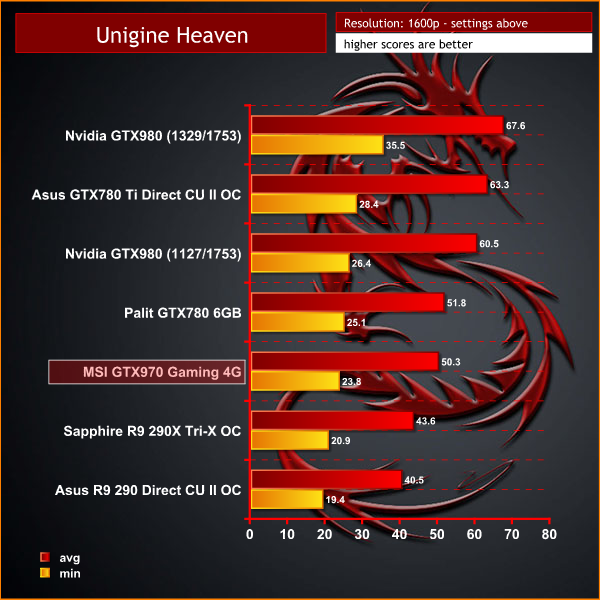
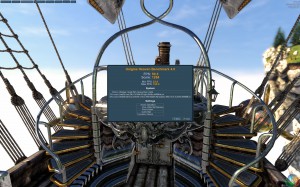
Stellar performance from the MSI GTX970 Gaming 4G, almost matching the Palit GTX780 6GB edition. The Sapphire R9 290X Tri-X OC falls some way behind the GTX970 Gaming 4G, although Nvidia card do score particularly well in this Tessellation heavy benchmark.
Valley Benchmark is a new GPU stress-testing tool from the developers of the very popular and highly acclaimed Heaven Benchmark. The forest-covered valley surrounded by vast mountains amazes with its scale from a bird’s-eye view and is extremely detailed down to every leaf and flower petal. This non-synthetic benchmark powered by the state-of-the art UNIGINE Engine showcases a comprehensive set of cutting-edge graphics technologies with a dynamic environment and fully interactive modes available to the end user.
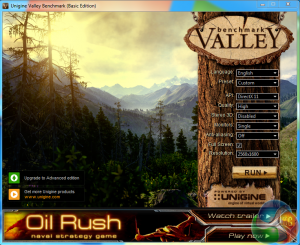
We toggle quality to HIGH, and resolution to 1600p.
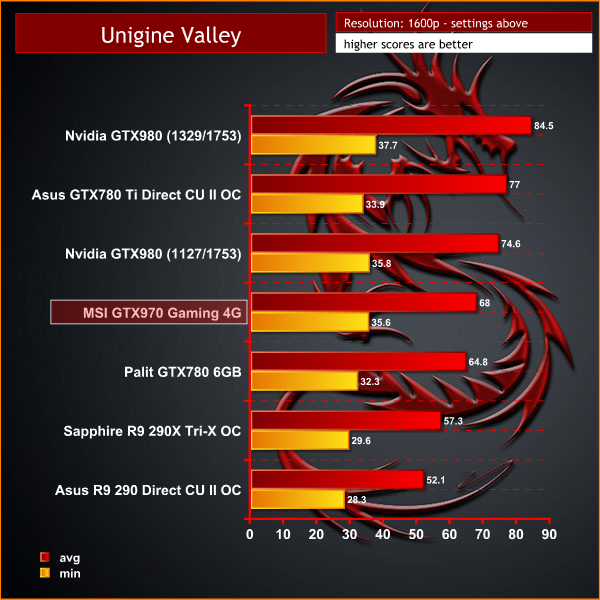
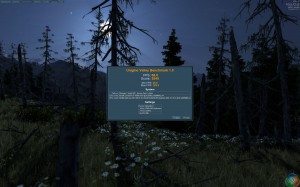
At 1600p, the MSI GTX970 Gaming 4G outperforms the Palit GTX780 6GB by around 3 frames per second. The AMD based architecture struggles in this benchmark, falling to the bottom of the chart.
Grid Autosport (styled as GRID Autosport) is a racing video game by Codemasters and is the sequel to 2008′s Race Driver: Grid and 2013′s Grid 2. The game was released for Microsoft Windows, PlayStation 3 and Xbox 360 on June 24, 2014. (Wikipedia).



On this page we test at 1080p and 1600p using the ‘Ultra' image quality profile with 8x MSAA.
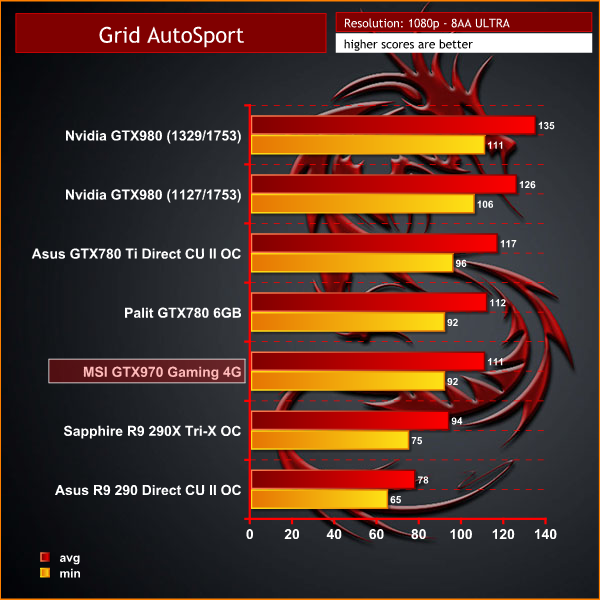
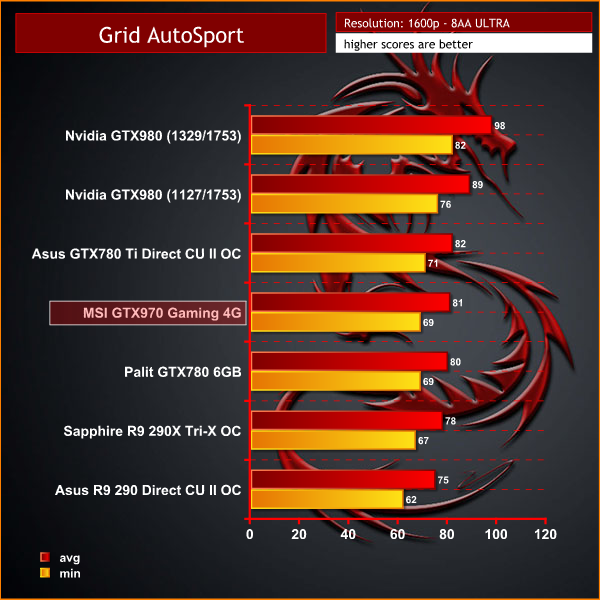
The MSI GTX970 Gaming 4G battles with the Palit GTX780 6GB, slightly behind at 1080p, but slightly ahead at 1600p.
Grid Autosport (styled as GRID Autosport) is a racing video game by Codemasters and is the sequel to 2008′s Race Driver: Grid and 2013′s Grid 2. The game was released for Microsoft Windows, PlayStation 3 and Xbox 360 on June 24, 2014. (Wikipedia).
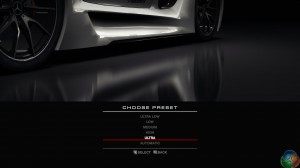
We test at Ultra HD 4k with 8MSAA. The Ultra Profile is selected for maximum image quality.
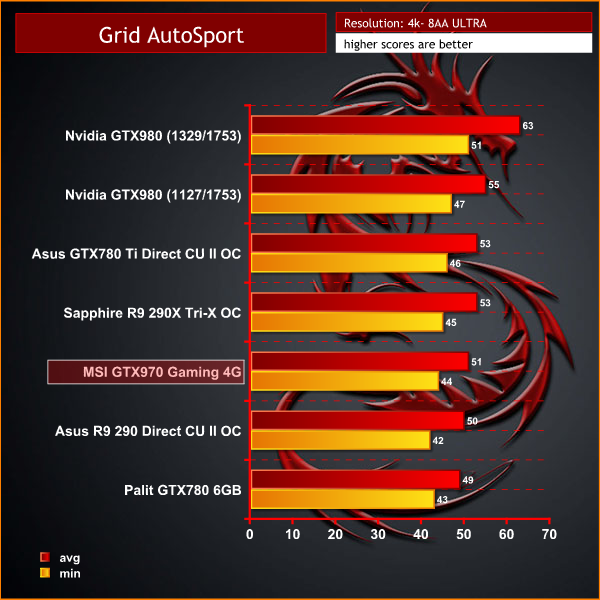
At 4K resolutions, the Sapphire R9 290X Tri-X OC moves up a few places, averaging 53 frames per second. The MSI GTX970 Gaming 4G is very close behind, averaging 51 frames per second.
Thief is set in a dark fantasy world inspired by Victorian, gothic, and steampunk aesthetics. Garrett, a master thief who has been away from his hometown for a long time, returns to it, a place known only as The City, and finds it ruled with an iron grip by a tyrant called The Baron. While The City is ravaged by a plague, the rich continue to live in isolation and good fortune while the poor are forming numerous mobs against the authorities, Garrett intends to use the volatile situation to his favor. (Wikipedia).
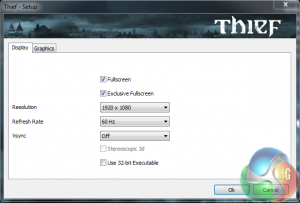
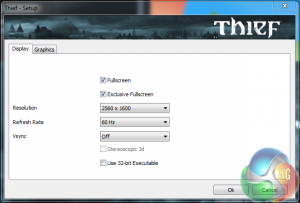
We test with the ‘very high' image quality preset at 1080p and 1600p.
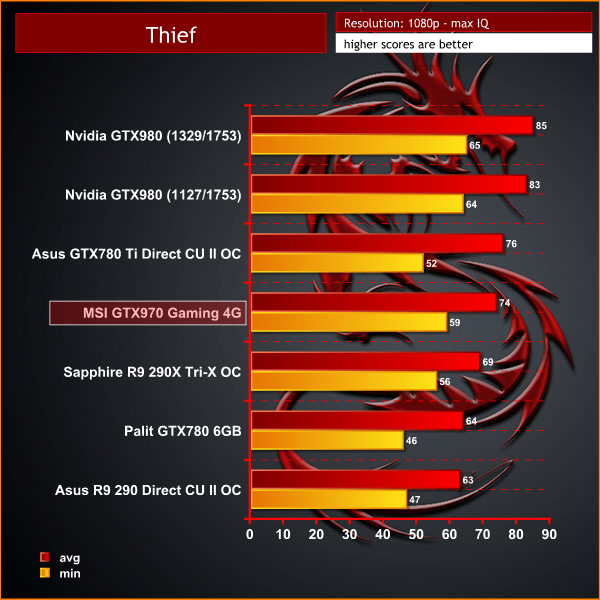
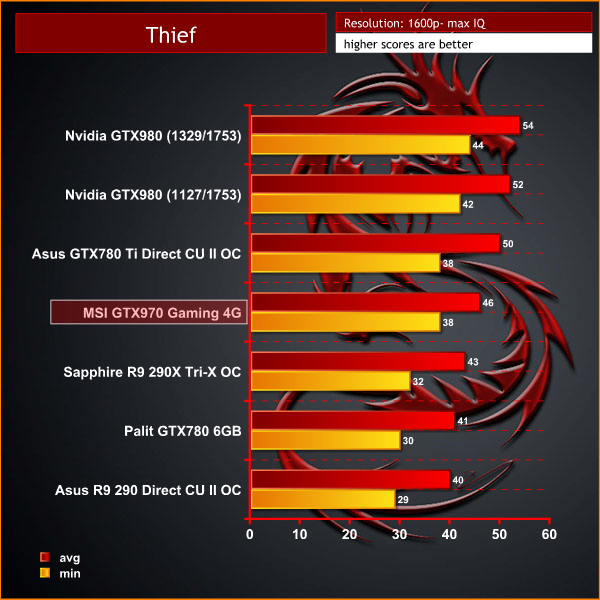
Thief looks great on the latest Nvidia hardware – and the GTX980 claims the top spot by a clear margin. The MSI GTX970 Gaming 4G scores well at both resolutions, outperforming the more expensive Sapphire R9 290X Tri-X OC at 1600p.
Thief is set in a dark fantasy world inspired by Victorian, gothic, and steampunk aesthetics. Garrett, a master thief who has been away from his hometown for a long time, returns to it, a place known only as The City, and finds it ruled with an iron grip by a tyrant called The Baron. While The City is ravaged by a plague, the rich continue to live in isolation and good fortune while the poor are forming numerous mobs against the authorities, Garrett intends to use the volatile situation to his favor. (Wikipedia).
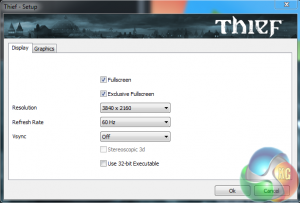
We test at the ‘very high' preset for maximum image quality. Resolution is set to 4k for this particular test.
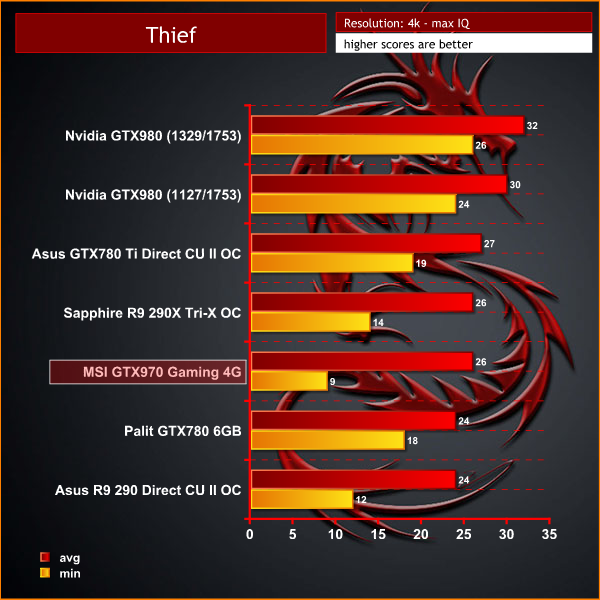
Powering Thief at high image quality settings at 4K resolution proves a little too much for the MSI GTX970 Gaming 4G – we also noticed some big drops in frame rate in specific areas of the environment.
Tomb Raider received much acclaim from critics, who praised the graphics, the gameplay and Camilla Luddington’s performance as Lara with many critics agreeing that the game is a solid and much needed reboot of the franchise. Much criticism went to the addition of the multiplayer which many felt was unnecessary. Tomb Raider went on to sell one million copies in forty-eight hours of its release, and has sold 3.4 million copies worldwide so far. (Wikipedia).
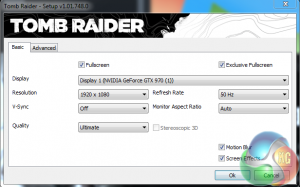
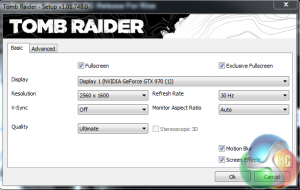
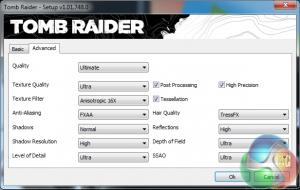
We test with the ‘ultimate' image quality profile at 1080p and 1600p.
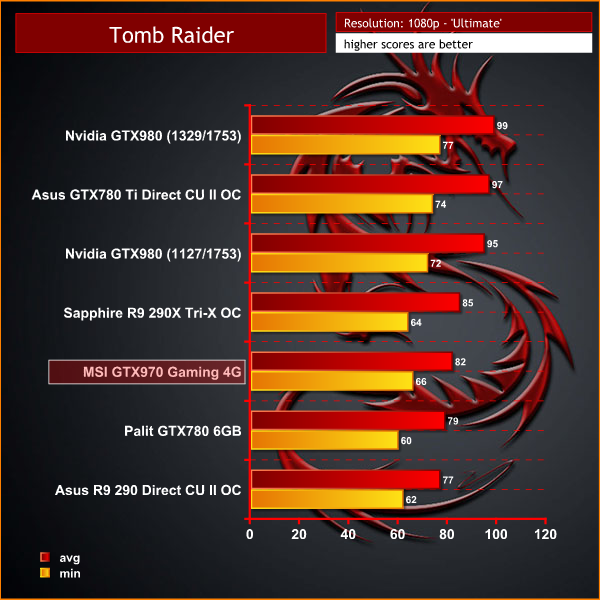
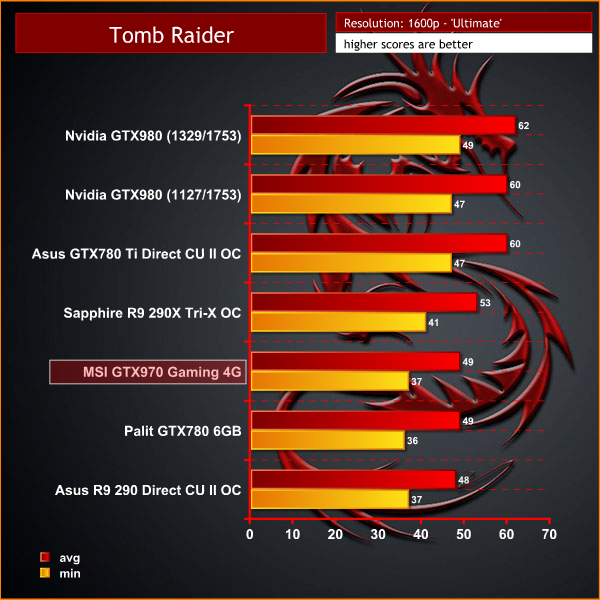
Excellent performance and fully playable at both 1080p and 1600p resolutions – with the image quality maxed.
Tomb Raider received much acclaim from critics, who praised the graphics, the gameplay and Camilla Luddington’s performance as Lara with many critics agreeing that the game is a solid and much needed reboot of the franchise. Much criticism went to the addition of the multiplayer which many felt was unnecessary. Tomb Raider went on to sell one million copies in forty-eight hours of its release, and has sold 3.4 million copies worldwide so far. (Wikipedia).
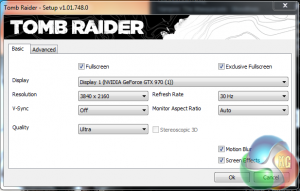
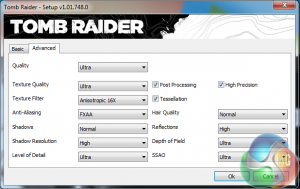
We test at Ultra HD 4k resolution with the ‘Ultra' image profile enabled. Single GPU solutions find the ‘Ultimate' image quality preset too difficult to power properly.
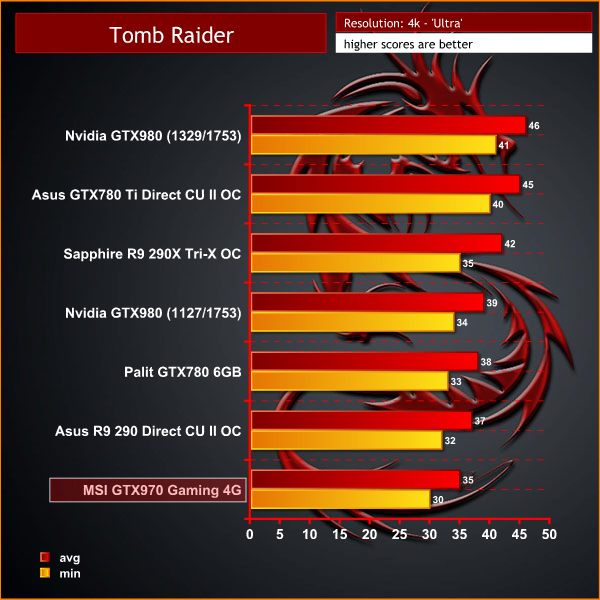
At Ultra 4K, with these image quality settings, the MSI GTX970 Gaming 4G manages to power the game- holding a frame rate at 30 or higher at all times.
On May 22, 2014, a Redux version of Metro Last Light was announced. It was released on August 26, 2014 in North America and August 29, 2014 in Europe for the PC, PlayStation 4 and Xbox One. Redux adds all the DLC and graphical improvements. A compilation package, titled Metro Redux, was released at the same time which includes Last Light and 2033. (Wikipedia).
We test with following settings: Quality-Very High, SSAA-off, Texture Filtering-16x, Motion Blur-Normal, Tessellation-Normal, Advanced Physx-On.
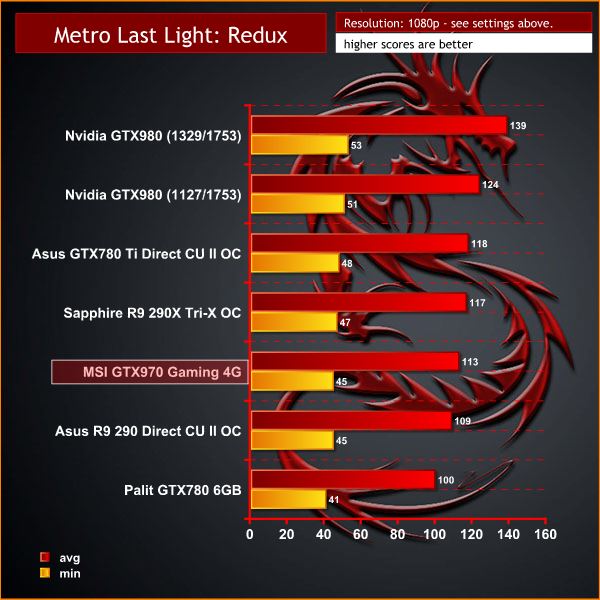
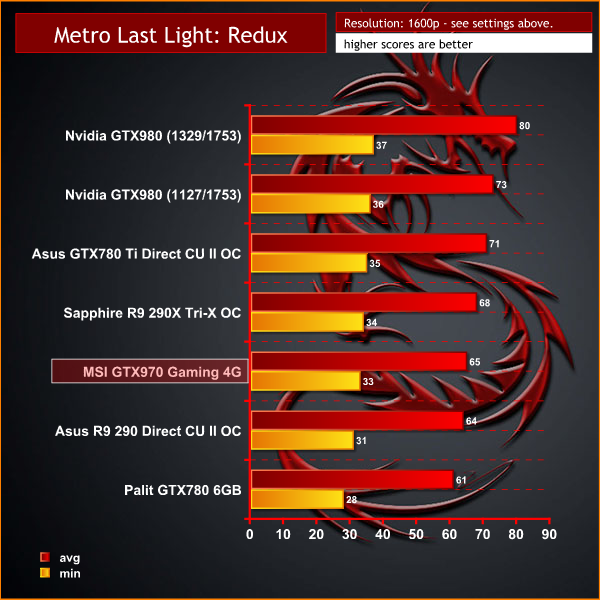
Excellent performance at both 1080p and 1600p, maintaining smooth frame rates. The MSI GTX970 Gaming 4G outperforms both the Asus R9 290 Direct CU II OC and Palit GTX780 6GB solutions.On May 22, 2014, a Redux version of Metro Last Light was announced. It was released on August 26, 2014 in North America and August 29, 2014 in Europe for the PC, PlayStation 4 and Xbox One. Redux adds all the DLC and graphical improvements. A compilation package, titled Metro Redux, was released at the same time which includes Last Light and 2033. (Wikipedia).
We test with following settings: Quality-High, SSAA-off, Texture Filtering-16x, Motion Blur-off, Tessellation-Normal, Advanced Physx-off.
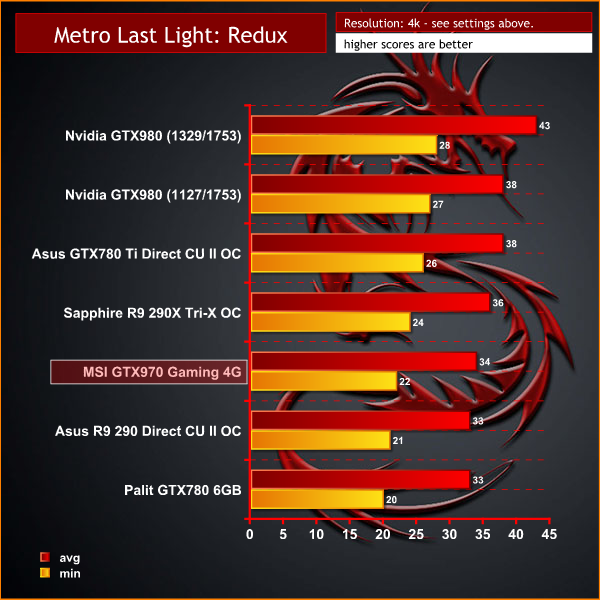
At 4K resolutions, the GTX970 runs out of steam a little dropping below a frame rate we would consider to remain playable (25fps) – highlighting the benefits you get by spending a little more cash on the GTX980.The tests were performed in a controlled air conditioned room with temperatures maintained at a constant 23c – a comfortable environment for the majority of people reading this.Idle temperatures were measured after sitting at the desktop for 30 minutes. Load measurements were acquired by playing Crysis Warhead for 30 minutes and measuring the peak temperature. We also have included Furmark results, recording maximum temperatures throughout a 30 minute stress test. All fan settings were left on automatic.
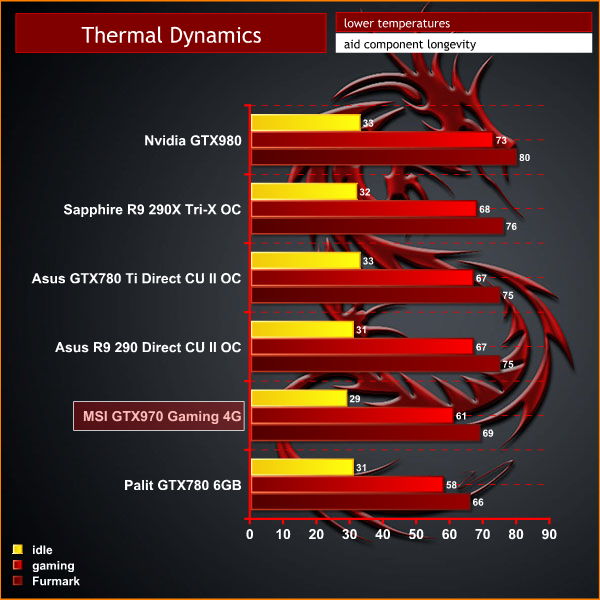
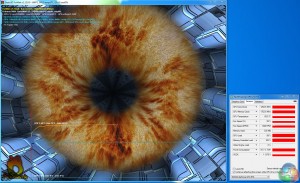
The MSI cooler maintains temperatures around 60c-61c when gaming – this drops to around 30c when idle. The fans on this card don't spin until around 50c – ensuring silent operating conditions (such as when watching a movie or general internet browsing).
We have built a system inside a Lian Li chassis with no case fans and have used a fanless cooler on our CPU. The motherboard is also passively cooled. This gives us a build with almost completely passive cooling and it means we can measure noise of just the graphics card inside the system when we run looped 3dMark tests.
We measure from a distance of around 1 meter from the closed chassis and 4 foot from the ground to mirror a real world situation. Ambient noise in the room measures close to the limits of our sound meter at 28dBa.
Why do this? Well this means we can eliminate secondary noise pollution in the test room and concentrate on only the video card. It also brings us slightly closer to industry standards, such as DIN 45635.
KitGuru noise guide
10dBA – Normal Breathing/Rustling Leaves
20-25dBA – Whisper
30dBA – High Quality Computer fan
40dBA – A Bubbling Brook, or a Refrigerator
50dBA – Normal Conversation
60dBA – Laughter
70dBA – Vacuum Cleaner or Hairdryer
80dBA – City Traffic or a Garbage Disposal
90dBA – Motorcycle or Lawnmower
100dBA – MP3 player at maximum output
110dBA – Orchestra
120dBA – Front row rock concert/Jet Engine
130dBA – Threshold of Pain
140dBA – Military Jet takeoff/Gunshot (close range)
160dBA – Instant Perforation of eardrum
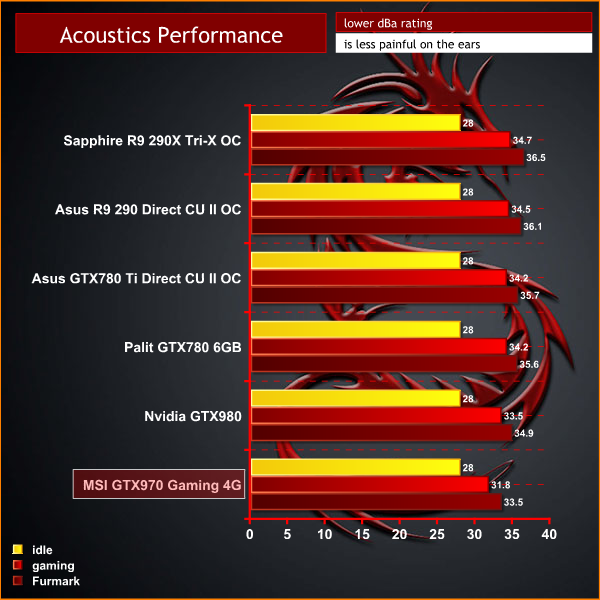
This is an exceptionally quiet graphics card, idling with the fans in an inactive state. When 50c is reached, the fans start to spin up, hitting a maximum of 1,300 rpm when Furmark is running. When gaming, the card is basically silent – another major win for the efficient Maxwell architecture.
To test power consumption today we are using a Keithley Integra unit and we measure power consumption from the VGA card inputs, not the system wide drain. We measure results while gaming in Tomb Raider at 4k resolution and the synthetic stress test Furmark – recording both results.
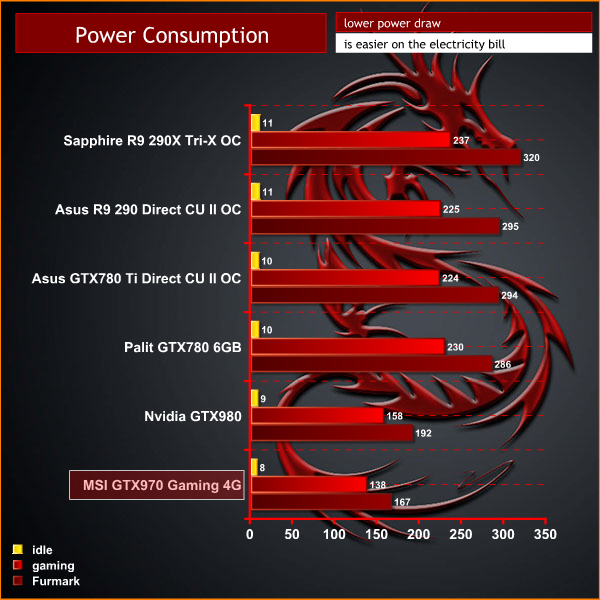
The Maxwell architecture is extremely power efficient – seen before with the excellent GTX750 ti, which took all the power it needed from the PCI e slot.
MSI's GTX970 Gaming 4G idles around 8 watts, rising to just below 140 watts when gaming. The Sapphire R9 290X Tri-X OC by comparison consumes 237 watts under gaming load.
To overclock today we are using the latest V4.0.0 of MSI's Afterburner based on the excellent Rivatuner.
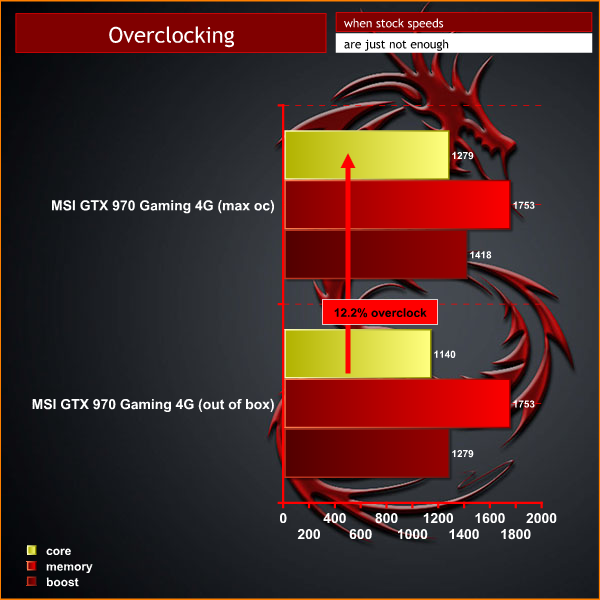
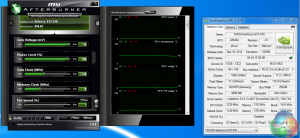
There was plenty of overclocking headroom on the MSI GTX970 Gaming 4G – hitting a peak of 1,279mhz (1,418mhz boost) – core voltage and power limit settings were increased to get this result stable.
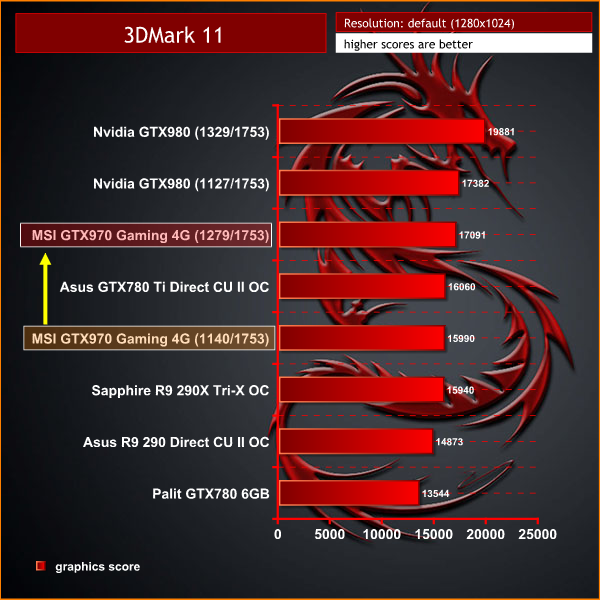
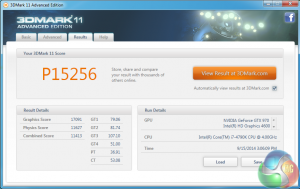
The substantial overclock helped to increase 3dMark11 scores from 15,990 points to 17,091 points. At these overclocked speeds, the MSI GTX970 Gaming 4G was outperforming the Asus GTX780 Ti Direct CU II OC Edition!
Power consumption in the desktop enthusiast sector has been rising for some time, so when I got my first hands on with the Maxwell architecture earlier this year I felt it was a huge step forward for Nvidia … and the marketplace as a whole. I was fascinated to see that when the GTX750 ti was overclocked it could keep up with AMD's HD7850 – while consuming half the power under load and getting all the juice it needed direct from the PCI e slot. No additional PCI e connectors needed.
At the time we were interested to see how Nvidia would evolve the new Maxwell architecture into more expensive and powerful solutions.
If you have been reading our launch reviews today you will have already studied our findings from testing the reference Nvidia GTX980 graphics card. In the £400-£500 sector this product really has no challengers. Nvidia's GTX780Ti was already the market leader and the GTX980 takes things a stage further by delivering more performance with a drop in power demands and heat output. The immense overclocking headroom ensures the GTX980 pulls away from overclocked GTX780Ti solutions.
Even though Nvidia have launched the GTX980 today at a lower £430 starting point than the GTX780 ti before it, the price will still prove too prohibitive for most. This is why the GTX970 has been launched today … it is designed for the mass gaming audience who can budget up to £300 for a new upgrade.
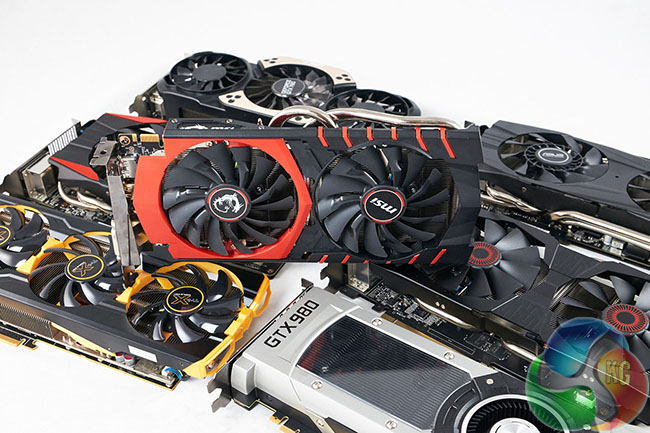
Nvidia have launched the reference GTX970 at £259.99 inc vat in the United Kingdom. When overclocked the GTX970 will outperform preoverclocked AMD R9 290X solutions – which can often cost close to £400 inc vat. Nvidia have a reputation for relatively ‘high pricing' so it is quite remarkable that many of the overclocked, custom solutions such as the MSI GTX970 Gaming 4G reviewed today will be available for only £274.99 inc vat.
The MSI GTX970 Gaming 4G comes very highly recommended by KitGuru. The Twin Frozr 5 Hybrid cooler is very efficient, and the fans will only spin when the GPU is tasked to power a game. When watching a movie, or browsing the net the fans will deactivate for complete silence. This is only possible due to the cool running Maxwell architecture which ensures the cooler never has to work too hard, even under heavily loaded situations.
MSI have built their GTX 970 Gaming 4G to very high standards, using new 100mm Torx fans which are designed to increase airflow while reducing turbulence and noise. We could overclock the GTX970 Gaming 4G beyond a 1,400mhz Boost clock speed which places performance levels above an overclocked Sapphire R9 290X Tri-X OC and even past the Asus GTX780Ti Direct CU II OC which we retested for this review today. We don't have a reference GTX970 at hand, but we would imagine this card will also overclock well – particularly if the reference GTX980 is anything to go by.
Discuss on our Facebook page, over HERE.
Pros:
- one of the prettiest looking graphics cards we have seen.
- preoverclocked.
- low power demand.
- runs cool.
- fans disable below 50c.
- massive additional overclocking headroom.
- £275 inc vat – a new price to performance ratio leader.
- 4GB of GDDR5 memory.
Cons:
- could have been clocked much higher out of the box without compromising stability under load.
- doesn't need an 8 pin and a 6 pin power connector.
Kitguru says: The MSI GTX970 Gaming 4G is a looker. They say beauty is only skin deep, but this overclocked GTX970 has bags of performance and massive potential for overclocking well past the ‘out of box speeds'. Right now AMD have nothing to come close.

 KitGuru KitGuru.net – Tech News | Hardware News | Hardware Reviews | IOS | Mobile | Gaming | Graphics Cards
KitGuru KitGuru.net – Tech News | Hardware News | Hardware Reviews | IOS | Mobile | Gaming | Graphics Cards


